Functional outcomes following arthroscopic ACL reconstruction with fixed loop suture button and interference screw: A retrospective observational study
2 Chief Medical Officer, Healthium Medtech Limited, Bengaluru, Karnataka, India
3 Deputy General Manager – Clinical Affairs, Healthium Medtech Limited, Bengaluru, Karnataka, India
Received: 08-May-2023, Manuscript No. jotsrr-23-98150; Editor assigned: 09-May-2023, Pre QC No. jotsrr-23-98150 (PQ); Accepted Date: May 20, 2023 ; Reviewed: 15-May-2023 QC No. jotsrr-23-98150 (Q); Revised: 18-May-2023, Manuscript No. jotsrr-23-98150 (R); Published: 23-May-2023
This open-access article is distributed under the terms of the Creative Commons Attribution Non-Commercial License (CC BY-NC) (http://creativecommons.org/licenses/by-nc/4.0/), which permits reuse, distribution and reproduction of the article, provided that the original work is properly cited and the reuse is restricted to noncommercial purposes. For commercial reuse, contact reprints@pulsus.com
Abstract
Background: Reconstruction of the Anterior Cruciate Ligament (ACL) is a common surgical procedure; however, the outcome of the reconstruction often depends on the graft fixation method. Many fixation devices are available commercially and new devices and methods are emerging on a regular basis. The Infiloop fixed loop suture button and Helysis interference screw are state-of-the-art ACL Reconstruction (ACLR) fixation devices and the present study proposed to assess the functional outcomes and complications associated with them.
Methods: This is a retrospective observational study conducted after obtaining the ethical clearance from institutional ethical committee. Patients between 18-60 years who underwent ACLR surgery between April 2018 to July 2022 using the Infiloop fixed loop suture button and Helysis interference screw were included in this study. Functional outcome of the operated knee was evaluated by IKDC, Lysholm score, Tegner activity score, and SANE score.
Results: Out of the 33 patients included in this study, 23 were male and 10 were female. For all patients, femoral fixation of the graft was done using Infiloop Fixed loop suture button whereas for tibial fixation, Helysis Titanium Interference screw was used in 24 patients and Helysis PLDLA-βTCP Interference screw was used in 9 patients. Out of the 24 subjects that had an associated meniscal injury, meniscus repair was done for 4 patients, using Surestitch All inside meniscal repair implant. All functional outcome scores showed improvement post ACLR surgery: IKDC score 83.25, Lysholm score 96.30, SANE score 81%, and Tegner activity pre-surgery score levels 1.24 vs post-surgery 3.15. There were no reports of infection and wound related complications.
Conclusion: This study shows that use of Infiloop fixed loop suture button and Helysis interference screw resulted in improved positive functional outcome and are not associated with any complications post ACLR surgery.
Keywords
ACL, arthroscopy, functional outcome, interference screw, loop suture button
Introduction
Injury to the Anterior Cruciate Ligament (ACL) is a common ligament injury of knee that ranges from a sprain to a full tear or rupture of the whole ligament [1, 2]. Most common causes for an ACL injury are sport activities, domestic fall or vehicular accidents [1-3]. Without appropriate treatment, ACL injuries can result in increased joint laxity, instability of the knee, reduced physical activity, decreased sports participation, meniscal damage and a risk of developing osteoarthritis [4, 5].
ACL injuries can be managed both non-operatively or operatively, the choice of treatment depends upon the severity of the injury, age and activity level of the patient. The non-surgical treatment is a conservative option, mostly preferred by older patients whereas surgical treatment is recommended for younger and more active patients like athletes or patients with severe injuries [1, 2,6]. Surgically the options are either an ACL repair surgery where the ruptured ends of native tissue is re-approximated by aid of sutures or suture anchors or an ACL Reconstruction (ACLR) surgery where the damaged ACL is replaced with a biological tendon graft fixed into bone tunnels in the femur and tibia to reconstitute the anatomy and function of the native ACL [1, 2]. The tendon graft could be sourced from the patient (autograft) or from a cadaver donor (allograft). The most common tendon graft use d are hamstring tendon, bone-patellar tendon-bone, or the quadriceps tendon [1, 2,7]. ACLR surgery can also be done using synthetic ligament [8].
ACLR surgeries have become one of the most successful and commonly performed surgeries. Strong graft fixation has been considered a major factor in favourable outcome of ACLR surgery. Since the first ACLR surgery was performed in 1980, numerous devices and methods for graft fixation have been developed and marketed [7,9].
The present study was conducted to assess the functional outcomes and complications of the Infiloop fixed loop suture button and Helysis interference screw, when used for ACL reconstruction.
Materials and Methods
DEVICE DESCRIPTION
Infiloop Fixed loop UHMWPE suture Titanium button: The su ture portion of the fixation device is made of a UHMWPE (Ultra-High- Molecular-Weight-Poly-Ethylene). The b utton i s made of Titanium metal. It is intended for soft tissue fixation to the bone (Fig. 1).
Helysis PLDLA-βTCP interference screw: The screw is made up of PLDLA-βTCP [poly (L-co-DL lactic acid) + Beta Tricalcium phosphate]. It is intended for soft tissue fixation to the bone (Fig. 2).
Helysis Titanium interference screw: The screw is made of Titanium metal. It is intended for soft tissue fixation to the bone (Fig. 3).
Surestitch all inside meniscus repair implant: This device consists of Polyether Ether Ketone (PEEK) implants, pre-tied with USP #2-0 Non- absorbable UHMWPE suture and preloaded into a needle delivery system (Fig. 4).
Study design and Participants
This was an observational retrospective single centre study to review patients who underwent ACL reconstruction at the study centre (Nandana Health Care Services India, Kaade Hospital Unit, Bengaluru, Karnataka) between April 2018 to July 2022 using Infiloop fixed loop suture button and Helysis interference screw of Healthium Medtech Limited. The objective of the study was to evaluate the functional outcomes, activity level and any complications following arthroscopic ACLR using Infiloop fixed loop suture button and Helysis interference screw.
This trial was performed in accordance with ICH-GCP guidelines, Declaration of Helsinki, Indian Medical devices rules-2017 and New Drugs & Clinical Trial Rules-2019 issued by the Central Drugs Standard Control Organization, Ministry of Health, and Government of India. The clinical trial was registered with the Clinical Trial Registry of India (CTRI) (CTRI/2022/11/047339).
All the enrolled subjects were consented before the telephonic interview for the study purpose. Written or verbal informed consent was obtained from patients who were eligible for inclusion criteria. Patients who met all of the inclusion criteria and none of the exclusion criteria were enrolled into the study.
Eligibility Criteria
The inclusion criteria included:
1. Male and female patients aged between 18 years to 60 years at the time of surgery;
2. Patients who underwent ACLR using Infiloop fixed loop suture button and Helysis interference screw between April 2018 to July 2022; and
3. Patients who have provided verbal consent or written informed consent (if subject visits the site).
Any patient who were not able to provide consent (written or verbal) and unwilling to be followed up telephonically; or patients who have suffered traumatic injury after surgery affecting the operated knee; or patients who are unable to move/walk due to critical illness other than operated knee complications were excluded from the study .
Data Collection And Outcomes
The demographic data, medical history and ACLR procedure details of the eligible subjects were recorded from the hospital/site’s in-patients’ medical records. Functional outcome of the knee was evaluated by using four independent assessment scales, namely, International Knee Documentation Committee (IKDC), Lysholm Knee score, Tegner activity score, and Single Assessment Numeric Evaluation (SANE) score [10-16].
Statistical Analysis
The descriptive statistics for continuous variables was presented with number (n) and frequency (%) of non- missing observations, mean, and standard deviation.
Results
Overall, 33 patients (23 males and 10 females) were included in the study. The patient demographics and ACLR surgery details are listed in Table 1. The mean age, height and BMI was 34.55 years ± 8.52 years, 168.96 cm ± 9 cm and 25.92 kg/m2 ± 3.37 kg/m2 respectively. All patients had ACL injury due to fall; involvement of either knee in ACL injury was reported homogenously (right knee: 48.5%; left knee: 51.5%). The average time elapsed between injury and surgery was 179 days.
For all the enrolled subjects, hamstring tendon was used. For femoral fixation of the graft, Infiloop Fixed loop UHMWPE suture Titanium button was used for all patients whereas for tibial fixation Helysis Titanium Interference screw was used in 24 (72.7%) patients and Helysis PLDLA-βTCP Interference screw was used in 9 (27.2%) patients. 24 out of 33 subjects had an associated meniscal injury, out of which meniscectomy was done for 18 (75%) patients whereas meniscus repair was done for 6 patients (25%), using either Surestich All inside meniscal repair implant (4 patients; 66.7%) or Sironix orthopaedic fixation fibre (2 patients; 33.3%) (Table 1).
Table 1. Patients demographics and ACLR surgery details
| Demographics | |
|---|---|
| Age (years), mean ± SD | 34.55±8.52 |
| Sex, n (%) | |
Male |
23 (70%) |
| Female | 10 (30%) |
| Height (cm), Mean ± SD |
168.96±9 |
| Weight (Kg), Mean ± SD |
73.73±8.52 |
| BMI (Kg/m2), Mean ± SD |
25.92±3.37 |
| Co-morbidities, n (%) | |
| Diabetes | 3 (9%) |
| Hypertension | 2 (6%) |
| ACLR Surgery details | |
Side (Surgery) |
|
| Right | 16 (48.5%) |
Left |
17 (51.5%) |
| Duration of Injury before surgery (in days), Mean |
179 |
| Mode of Injury, n (%) | |
| Self-fall | 31(94%) |
| Accidental fall | 2 (6.06%) |
| Type of Injury, n (%) | |
| ACL injury | 9 (27.3%) |
| ACL plus meniscus injury | 24 (72.7%) |
| Type of graft used, n (%) | |
| Hamstring Graft | 33 (100%) |
| Implant for femoral fixation, n (%) | |
| Infiloop Fixed Loop UHMWPE suture Titanium Button | 33 (100%) |
| ProloopTM (ultra, mini, XL) adjustable loop button | 0 |
| Implant for tibial fixation, n (%) | |
| Helysis Titanium Interference screw | 24 (72.7%) |
| Helysis PLDLA-βTCP Interference screw | 9 (27.3%) |
| Intervention for Meniscus Injury (n=24), n (%) | |
| Meniscectomy | 18 (75%) |
| Meniscus repair | 6 (25%) |
| Implants for meniscus repair (n=6), n (%) | |
| Surestich All inside meniscal repair implant | 4 (66.7%) |
| Sironix orthopaedic fixation fibre | 2 (33.3%) |
| Other Knee Function, n (%) | |
| Normal | 33 (100%) |
| Abnormal | 0 |
| Rehabilitation performed, n (%) | 33 (100%) |
Functional outcomes post ACLR surgery were evaluated in all enrolled subjects using IKDC, Lysholm Knee score, Tegner activity score, and SANE score.
INTERNATIONAL KNEE DOCUMENTATION COMMITTEE (IKDC)
The average IKDC score of all study subjects was 83.25 ± 7.7. The average IKDC score for patients at <1 year, 1 year-2 years & >2 years follow up period was 80.7, 85.7 & 78.7, respectively. Patients who underwent meniscal repair using Surestich All inside meniscal repair implant had an average IKDC score of 87.9. Out of the 33 subjects, 24 patients that received Helysis Titanium Interference screw had an IKDC score of 83.97 whereas the 9 patients that received Helysis PLDLA-βTCP Interference screw reported an IKDC score of 81.7 (Table 2).
Table 2. IKDC Score
| IKDC Scores | Subjects (N=33) | Mean (%) |
|---|---|---|
| Overall IKDC score | 33 | 83.25±7.70 |
| IKDC score of patients with meniscal repair | 4 | 87.9 |
| IKDC score based on tibial fixation implant used | ||
| Helysis Titanium Interference screw | 24 | 83.97 |
| Helysis PLDLA-βTCP Interference screw | 9 | 81.7 |
| IKDC score based on Follow up duration | ||
| < 1 year | 11 (33.3%) | 80.7 |
| 1 - 2 years | 18 (54.5%) | 85.7 |
| >2 years | 4 (12.1%) | 78.7 |
LYSHOLM SCALE
The mean Lysholm score was 96.30 ± 4.64 which is considered“excellent” as per the scale [10,14,17] (Table 3).
Table 3. Lysholm Knee Score
| Section | Mean |
|---|---|
| Limp | 5 |
| Support | 5 |
| Locking sensation in the knee | 14.15 ±2.43 |
| giving way sensation from the knee | 25 |
| Pain | 23.18 ± 2.74 |
| swelling | 9.88 ±0.70 |
| Climbing stairs | 9.39 ±1.46 |
| Squatting | 4.67 ±0.48 |
| Total lysholm score | 96.30±4.64 |
TEGNER ACTIVITY SCORE
The average pre-surgery Tegner activity score was 1.24 which increased to 3.15 after surgery (Table 4). Out of the 33 subjects, 25 (75.75%) subjects reported a pre-surgery Tegner activity score of level 1 and 8 subjects (24.25%) reported a score of level 2. Post-surgery, 25 subjects (75.75%) reported a Tegner score of level 3, 5 subjects (15.15%) reported a level 4 and 1 subject (3.3%) reported a level 5. Only 2 subjects (6.06%) reported a Tegner activity score of level 2 post-surgery. No subject reported Level 0 and 6-10 score (Table 4).
Table 4. Tegner Activity Score
| Tegner activity score | Pre-surgery (n=33) | Post surgery (n=33) |
|---|---|---|
| Level 0 (cannot move or work) | 0 | 0 |
| Level 1 (sedentary work) | 25 (75.75%) | 0 |
| Level 2 (light labour, walking on uneven ground) | 8 (24.25%) | 2 (6.06%) |
| Level 3 (light labour) | 0 | 25 (75.75%) |
| Level 4 (moderately heavy labour) | 0 | 5 (15.15%) |
| Level 5 (heavy labour, competitive sports- cycling, cross-country skiing, recreational sports- jogging on uneven ground) | 0 | 1 (3.3%) |
| Level 6 (recreational sports-moderate) | 0 | 0 |
| Level 7 (competitive sports-light) | 0 | 0 |
| Level 8 (competitive sports-moderate) | 0 | 0 |
| Level 9 (competitive sports-heavy) | 0 | 0 |
| Level 10 (competitive sports-very heavy) | 0 | 0 |
| Overall score | 1.24 (1-2) | 3.15 (2-5) |
The Tegner activity score for the 4 patients who underwent meniscal repair using Surestich All inside meniscal repair implant; the score increased from 1.75 from before surgery to 3.25 after surgery (during follow-up period). The Tegner activity score for patients who received either Helysis Titanium Interference screw or Helysis PLDLA-βTCP Interference screw for tibial fixation was 1.25 & 1.20 respectively which improved to 3.16 and 3.10 post-surgery (at follow up) respectively.
SINGLE ASSESSMENT NUMERIC EVALUATION (SANE)
The average SANE score, as per patient evaluation, was 81% ± 11 with rating of the affected region as on follow date and mean of rating of opposite was 100% (Table 5).
Table 5. SANE score
| Sane score | Mean |
|---|---|
| Rating of affected region (as on follow-up date) | 81%±11 |
| Rating of opposite side (as on follow up date) | 1 |
No Infection and wound related complications were reported by the study patients. Patients were doing well with ACL reconstruction surgery and no patient required reoperation.
Discussion
An ACLR surgery involves removal of the ruptured ACL, harvesting and preparing of the graft, drilling of femoral and tibial tunnels for placing the graft and finally the graft fixation [7,18, 19]. A satisfactory clinical and functional outcome of an ACLR surgery depends strongly on a stable graft fixation [20]. Currently, the grafts are fixed to femoral sites by either fixed loop or adjustable loop cortical button, cross-pin fixation or by interference screw methods [21]. For tibial graft fixation, metallic or bioabsorbable interference screws are preferred as it results in minimal graft elongation potentially leading to a stable long-term outcome [7].
In this study we retrospectively observed the functional outcomes and occurrence of any possible complication in 33 patients that underwent ACLR surgery between the period of April 2018 to July 2022 at a single study centre. The products which were evaluated were Infiloop Fixed loop UHMWPE suture Titanium button, Helysis PLDLA-βTCP interference screw, Helysis Titanium interference screw and Surestitch all inside meniscus repair implant.
The functional outcomes post ACLR surgery were assessed using four independent scales, namely, IKDC, Lysholm Knee score, Tegner activity score, and SANE score [10,17]. While IKDC scores detect improvement or deterioration in symptoms, function, and sports activities due to knee impairment the Lysholm scale evaluates outcomes of knee ligament surgery, particularly symptoms of instability. The Tegner Activity score was developed to complement Lysholm scale, to grade work and sporting activities in order to identify if limitation in function was due to decreased activity level [10,14,16, 17].
The overall average IKDC score in the current study was 83.25 ± 7.70 while the Lysholm knee score was 96.30 ± 4.64. The average SANE score of the patients, that requires the patient to rate their function, was 81% ± 11 (rating of the affected region as on follow-up date) and average rating of opposite knee (unaffected knee) was 100%. The Tegner activity score levels pre-surgery was 1.24 which increased post-surgery to 3.15. The patients had low presurgery Tegner activity score level of 1 (75.75%) and level 2 (24.25%) which indicated that patients were able to do only sedentary work. Post-surgery, 31/33 patients reported Tegner score of level 3 or more and only 2 patients reported level 2 suggesting that post-surgery majority of patients were able to do light to moderate work. The functional assessment scores of the current study were positively comparable to previous studies with similar graft fixation devices [22–26].
In this study, the graft was fixed at the femoral site using Infiloop Fixed loop UHMWPE suture button in all the enrolled patients. The product is made of titanium which is considered the most biocompatible metal. It provides a strong and easy fixation with positive clinical outcomes and low complication rates.
For tibial graft fixation, the patients were either implanted with the metallic Helysis Titanium Interference screw or the Helysis PLDLA- βTCP Interference screw which is made of bioabsorbable material Poly(L-co-DL Lactic Acid (PLDLA) in combination with beta- Tricalcium Phosphate (βTCP) [27]. While PLDLA is a phosphate ceramic with osteo-conductive properties that degrades into phosphate and calcium that are rapidly reabsorbed by the body , the βTCP releases basic salts, which maintain a higher pH in the area of the implant that neutralizes to normal acidic environment associated with degradation of polylactic acid [28]. A neutral pH offers the advantage of less local reactivity to the implant monomers and a reduced inflammatory response during reabsorption [27].
For ACLR surgery, metallic interference screws have been considered the gold standard as they promote early integration into bone with high strength and load-to-failure outcomes and a lower incidence of complications. However, metallic screws interfere with Magnetic Resonance Imaging (MRI) and may require removal in a revision surgery. Conversely, the bio-absorbable interference screws are composed of various biomaterials that resorb into the tissue; they do not need to be removed after surgery or interfere with MRI. No difference has been observed between metallic and bio-absorbable screws for ACLR in terms of knee function [22].
No apparent difference was observed in the functional outcome evaluations (IKDC score, Lysholm scale, and the pre- and post-surgery Tegner activity score) of patients implanted with tibial fixation, Helysis Titanium Interference screw as compared to Helysis PLDLA-βTCP interference screws. This is similar to what has been reported in the literature [22,25, 26].
ACL injuries are often associated with meniscal tears, requiring either meniscectomy or meniscal repair [29]. In the present study, 24 out of 33 patients had meniscal injuries, out of which 6 patients required meniscal repair along with the ACLR surgery; 4 patients were implanted with Surestich All inside meniscal repair implant. The IKDC score of the patients with meniscal implant was 87.9 which is comparable to average overall IKDC score reported for the study. Similarly, the preand post-surgery Tegner activity score of patients with meniscal repair were similar to the total scores, indicating that meniscal repair surgery did not affect the functional outcome of the ACLR surgery.
There were no reports of infection and wound related complications and the patients were doing well after ACLR surgery with no requirement of reoperation.
This study has few limitations. Firstly, a retrospective study relies on patient assessment and is subject to bias [30]. Prospective studies including randomized controlled trials might provide stronger evidence. Secondly, the study sample size is relatively small. However, long term follow-up data in this study generated in a real-world setting definitely adds value. Also the study results show a significant co-relation in terms of IKDC score, Lysholm score, Tegner activity score and SANE score with the already published literature, validating the current study findings.
Conclusion
To conclude, the present study demonstrates that the reconstruction of ACL with Infiloop Fixed Loop UHMWPE Suture Titanium Button and Helysis Interference Screw (Titanium and PLDLA-BTCP) is safe and effective with good functional outcomes.
References
- Evans J, Nielson J l. Anterior Cruciate Ligament Knee Injuries. 2022.
- Raines BT, Naclerio E, Sherman SL. Management of anterior cruciate ligament injury: what’s in and what’s out?. Indian j. orthop. 2017;51:563-75. [Google Scholar] [Cross ref]
- Ahmed S, Ashraf M, Sahanand S, Rajan DV. Can ACL Tears be Restricted to Sports Injuries Alone? A Retrospective Analysis. Indian j. orthop. 2021;55:402-8. [Google Scholar] [Cross ref]
- Gopinathan P. Fate of the untreated anterior cruciate ligament-injured knee. J. Orthop. 2017 ;14(3):A1-3. [Google Scholar] [Cross ref]
- Louboutin H, Debarge R, Richou J, et al. Osteoarthritis in patients with anterior cruciate ligament rupture: a review of risk factors. The Knee. 2009 ;16(4):239-44. [Google Scholar] [Cross ref]
- Grindem H, Eitzen I, Engebretsen L, et al. Nonsurgical or surgical treatment of ACL injuries: knee function, sports participation, and knee reinjury: the Delaware-Oslo ACL Cohort Study. J. bone jt. surg., Am. vol. 2014 ;96(15):1233. [Google Scholar] [Cross ref]
- Zeng C, Lei G, Gao S, et al. Methods and devices for graft fixation in anterior cruciate ligament reconstruction. Cochrane database syst. rev. 1996;2013(9). [Google Scholar] [Cross ref]
- Satora W, Królikowska A, Czamara A, et al. Synthetic grafts in the treatment of ruptured anterior cruciate ligament of the knee joint. Polim. W Med.. 2017;47(1):55-9. [Google Scholar] [Cross ref]
- Dandy DJ, Flanagan JP, Steenmeyer V. Arthroscopy and the management of the ruptured anterior cruciate ligament. Clin. Orthop. Relat. Res. 1982;167:43-9. [Google Scholar] [Cross ref]
- Collins NJ, Misra D, Felson DT, et al. Measures of knee function. Arthritis care res. 2011;63 (S11):S208-28. [Google Scholar] [Cross ref]
- Hefti E, Müller W, Jakob RP, et al Evaluation of knee ligament injuries with the IKDC form. Knee Surg. Sports Traumatol. Arthrosc. 1993:226-34. [Google Scholar] [Cross ref]
- Irrgang JJ, Anderson AF, Boland AL, et al International Knee Documentation Committee. Responsiveness of the international knee documentation committee subjective knee form. Am j sports med. 2006;34(10):1567-73. [Google Scholar] [Cross ref]
- Irrgang JJ, Anderson AF, Boland AL, et al. Development and validation of the international knee documentation committee subjective knee form. Am. j. sports med. 2001;29(5):600-13. [Google Scholar] [Cross ref]
- Tegner YE, Lysholm JA. Rating systems in the evaluation of knee ligament injuries. Clin. Orthop. Relat. Res. (1976-2007). 1985;198:42-9. [Google Scholar] [Cross ref]
- Shelbourne KD, Barnes AF, Gray T. Correlation of a single assessment numeric evaluation (SANE) rating with modified Cincinnati knee rating system and IKDC subjective total scores for patients after ACL reconstruction or knee arthroscopy. Am. j. sports med. 2012;40(11):2487-91. [Google Scholar] [Cross ref]
- Williams GN, Taylor DC, Gangel TJ, et al. Comparison of the single assessment numeric evaluation method and the Lysholm score. Clin. Orthop. Relat. Res. 2000 ;373:184-92. [Google Scholar] [Cross ref]
- Lysholm J, Gillquist J. Evaluation of knee ligament surgery results with special emphasis on use of a scoring scale. Am. j. sports med. 1982;10(3):150-4. [Google Scholar] [Cross ref]
- Baer GS, Harner CD. Clinical outcomes of allograft versus autograft in anterior cruciate ligament reconstruction. Clin. sports med. 2007 ;26(4):661-81. [Google Scholar] [Cross ref]
- Brand J, Weiler A, Caborn DN, et al. Graft fixation in cruciate ligament reconstruction. Am. j. sports med. 2000;28(5):761-74. [Google Scholar] [Cross ref]
- Pinczewski L, Roe J, Salmon L. Why autologous hamstring tendon reconstruction should now be considered the gold standard for anterior cruciate ligament reconstruction in athletes. Br. j. sports med. 2009;43(5):325-7. [Google Scholar] [Cross ref]
- Nie S, Zhou S, Huang W. Femoral fixation methods for hamstring graft in anterior cruciate ligament reconstruction: A network meta-analysis of controlled clinical trials. Plos one. 2022;17(9):e0275097. [Google Scholar] [Cross ref]
- Xu B, Yin Y, Zhu Y, et al. Comparison of bioabsorbable and metallic interference screws for graft fixation during ACL reconstruction: a meta-analysis of randomized controlled trials. Orthop. J. Sports Med. 2021;9(8). [Google Scholar] [Cross ref]
- Chandru V, Santhosh MS, JS ST, et al. Comparison of fixed-and variable-loop button fixation in arthroscopic anterior cruciate ligament reconstruction. Cureus. 2022;14(4). [Google Scholar] [Cross ref]
- Shervegar S, Nagaraj P, Grover A, et al. Functional outcome following arthroscopic ACL reconstruction with rigid fix: a retrospective observational study. Arch. Bone Jt. Surg. 2015;3(4):264.. [Google Scholar] [Cross ref]
- Khadka T, Thapa PB, Kayastha N, et al. Anterior cruciate ligament reconstruction with hamstring autograft using bioabsorbable versus titanium interference screw in tibial tunnel in Government Hospital of West Nepal. J. Chitwan Med. Coll.. 2022;12(2):122-4. [Google Scholar] [Cross ref]
- Myers P, Logan M, Stokes A, et al. Bioabsorbable versus titanium interference screws with hamstring autograft in anterior cruciate ligament reconstruction: a prospective randomized trial with 2-year follow-up. Arthrosc.: J. Arthrosc. Relat. Surg. 2008 ;24(7):817-23. [Google Scholar] [Cross ref]
- Sironix Medtech:Helysis Interfrence Screws
- Barber FA. Poly-D, L-lactide interference screws for anterior cruciate ligament reconstruction. Arthrosc.: J. Arthrosc. Relat. Sur. 2005;21(7):804-8. [Google Scholar] [Cross ref]
- Hagino T, Ochiai S, Senga S, et al. Meniscal tears associated with anterior cruciate ligament injury. Arch. orthop. trauma surg. 2015;135:1701-6. [Google Scholar] [Cross ref]
- Norvell DC. Study types and bias—Don’t judge a study by the abstract’s conclusion alone. Evid.-based spine-care j. 2010;1(02):7-10. [Google Scholar] [Cross ref]

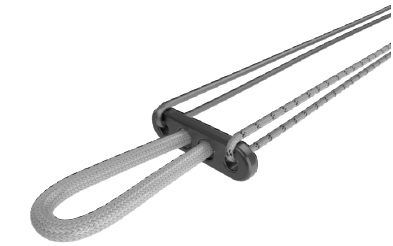
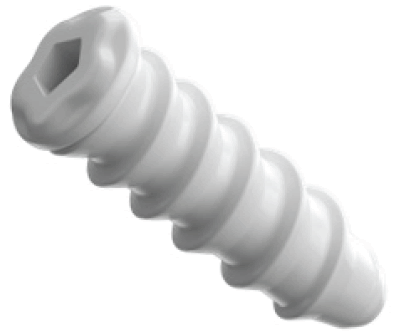
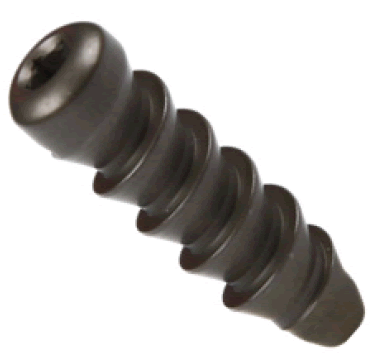
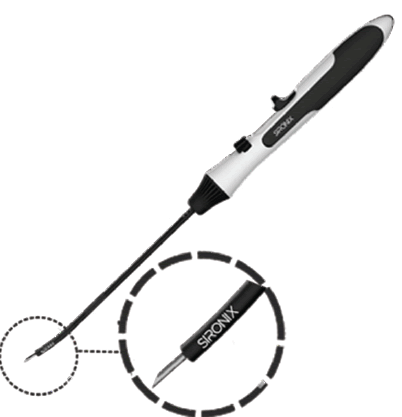
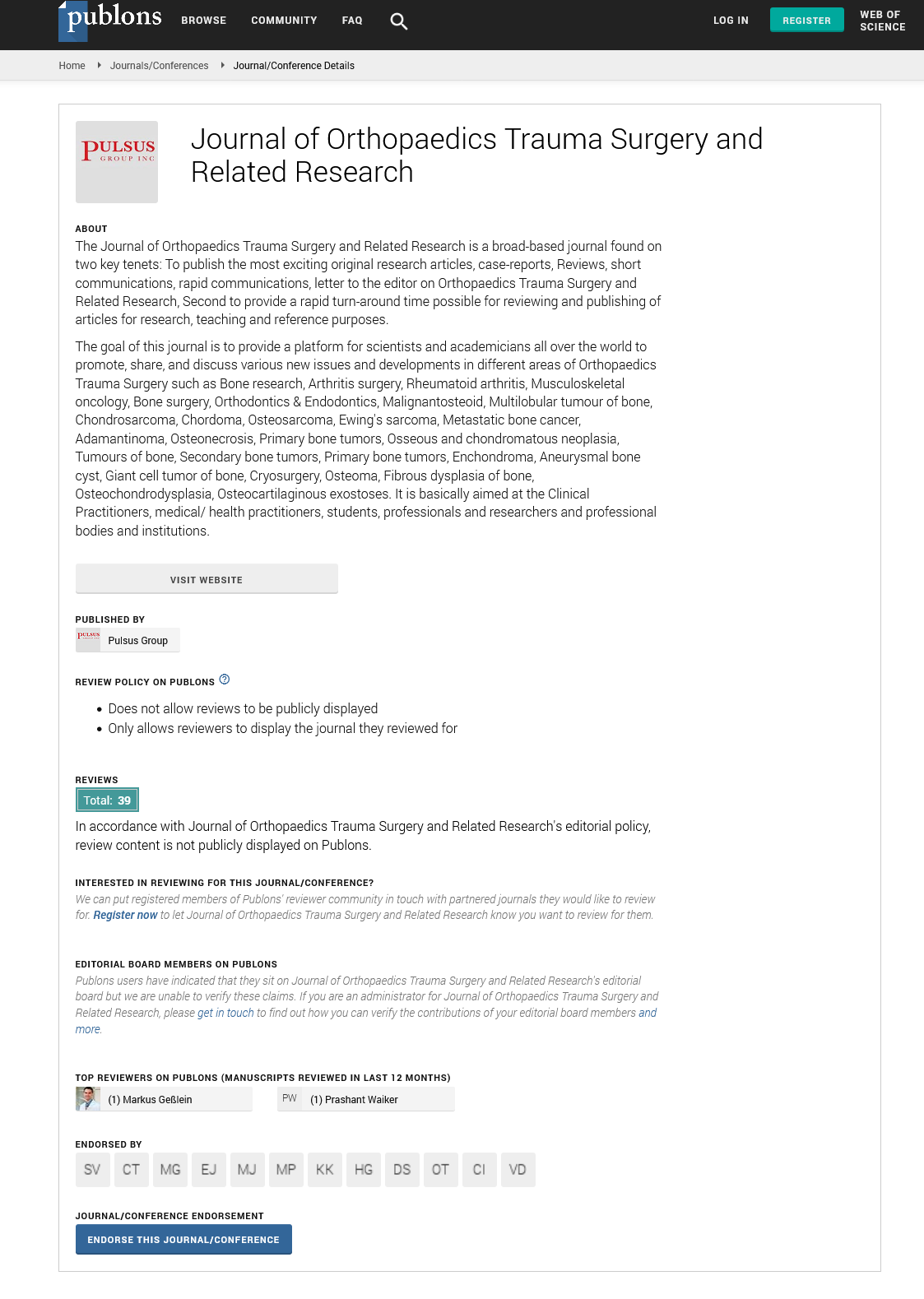
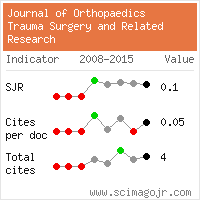
 Journal of Orthopaedics Trauma Surgery and Related Research a publication of Polish Society, is a peer-reviewed online journal with quaterly print on demand compilation of issues published.
Journal of Orthopaedics Trauma Surgery and Related Research a publication of Polish Society, is a peer-reviewed online journal with quaterly print on demand compilation of issues published.